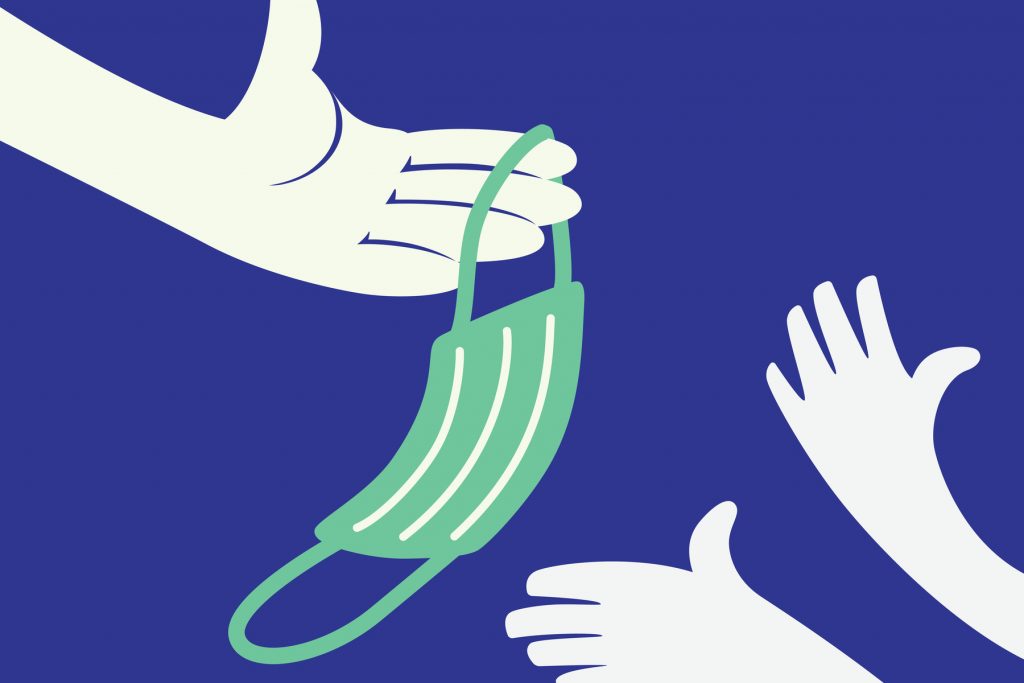
Photo courtesy of Shutterstock
The best recipes for successful co-parenting include equal parts: advanced, strategic schedules, emotional preparedness, direct, minimal communication, and strong follow-through between parents. Parents who work towards this type of relationship know that it takes next to nothing to shake up the dynamic co-parenting routine. Usually, you can bounce back from each disruption a little more prepared than the previous one. But COVID-19 is not the average disruption.
Previously effective co-parenting routines have come to a stretching halt, as it begins to shake the world and life as we know it. The already vulnerable co-parenting relationships teeter onto further fragile territory. Each party needs to be extra communicative since all pre-existing plans are out the window. Even more challenging as the individual may also be facing an all-time high in stress levels with the unknown effects. The virus may affect their finances and emotions.
Separation
The sudden change in routine takes a toll on parents working towards a strong bond for their children in an already cramped space of co-parenting. Some parents have to spend extended time away from their children due to changes in work schedules and light of school closures. This is sure to cause isolation and infuse thoughts of not being ‘enough.’ It is best to keep calm and in a routine as best as possible. Take time to process the thoughts and let them come and go before reacting; especially, before communicating with all caretakers. Give yourself a break; you are doing the best you can and quite honestly — there are millions of people who are experiencing the same unrest that you are — so rest assured that you are not alone. Reach out to fellow parents, even though they may not be in the same situation — you will be able to relate to how difficult parenthood is in general and create a source of connection.
Maintaining Routine
We are human, and we like the idea of predictable schedules. Especially when it comes to child care, it creates a sense of security and safety. Plan your work, work your plan. Write down a weekly action plan as it relates to childcare and things that need to be addressed between parents and caretakers. On the action plan include specific goals like, “having a conversation with the ex-spouse about…” It will help as you begin to communicate your needs to them in an efficient manner.
Effective Communication
As you begin to have more frequent communications, here is a basic structure that might help in regards to childcare
- Take two minutes to acknowledge each other and the struggles you are experiencing as it relates to childcare.
- Present the goals for the week and how you will work together to achieve them.
- Be direct and concise, try not to let the emotion of the change overpower the end goal, which should be to create a new plan that will work for both of you during this time of unrest.
- Address any outstanding concerns and educate each other about disease prevention.
- Exchange resources with each other that might help in child education and development.
Parenting
As adults who have gone through the agony of divorce proceedings, it is easy to become fixated on how much time we have with our children. But, the main concern should be how we are spending that time with our children. The quality of time spent has proved itself time and time again. Most children become more restless, anxious, or disruptive during a time of change. Acknowledge that change is impacting them and assure them. Shower them with genuine words of love and affection to affirm that all is well. Another critical aspect of co-parenting is not voicing the adult frustrations between parents or families to the child. During these times of the unknown, it may be easier than ever to misdirect anger or speak openly about all the opinions in your mind about the other parent or family. However, this is not the appropriate audience. Be the example for your own family members; remember you set the precedence. Your vision drives the parenting model for your child. And, small actions drive their whole life.
[Read related: Be Your Own Parent: How to Make it Through Your 20s and Possibly the Rest of Your Life]
Personal Care
The more you prioritize yourself: body, mind, and soul — the better equipped you will be to take care of those around you. Rest is essential, along with hydration, nutritious meals, and some time outdoors if it is an option in your area. Long sessions of binge-watching can be relaxing for a day or two, but too if too often, the mind drifts into a state of an abyss. We are facing multiple weeks if not months of disruption in work-life-child balance, it is best to keep a healthy mix of activities which include mindfulness breaks. Furthermore, add peace of mind and awareness to your surroundings, elevating your consciousness, and reducing your stress level.
You have already overcome many hurdles in self-development and relationship navigating as it relates to your child. Do not let this new challenge discourage you. Do not compare your parenting style to others. Use the tools in your tool chest; now is not the time to back down. This is what you have been preparing for without even knowing. One day at a time because this too shall pass.




